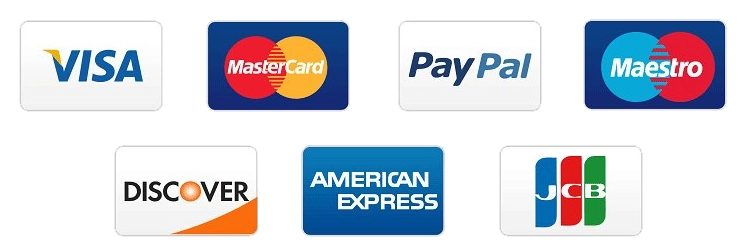Who says pressure washing is only limited to outdoor cleaning? What about the walls, tubs, and tiles’ mildew buildup that won’t go away with hours of hand scrubbing and bleaching?
In such circumstances, Eveage pressure washing tools become a great rescue.
With the right usage, skills, and expertise, Pressure Washer surface cleaner can prove to be a versatile tool to cleanse out embedded dirt and grease from your home walls and concrete surfaces.
In order to accomplish your indoor cleaning, all you need is to master the skills and creativity to get the job done. Also, be aware of the limitations and possibilities of using pressure washers indoors.
Let’s get started.
How To Pressure Wash Your Home Interior? Surface Cleaner Tips
The idea of Pressure washing your in-house dirt feels exciting because this device works wonders in turning your living spaces into shiny, all-clean capacity, and you won’t need to worry about doing manual scrubbing for hours.
However, Pressure washing your home interior is not as simple as cleaning the outdoor exterior. Indoor cleansing means you need to prepare your house for the cleaning task and be mindful of the challenges and potential dangers you may need to encounter.
These points below will help you if you’re starting out.
● Plan a full day if you intend to pressure wash your interior, as you will likely be required to transport the machine inside, fuel it, clean it, and dismantle it. Grab the Eveage pressure washer surface cleaner to make the process less tiresome and make the cleaning fun.
● Get yourself dressed in wet-proof attires, as by the end of the day; you will be completely soaked in. Also, wear goggles to keep your eyes safe.
● Pre-check the pressure before you start hitting the surface, as it saves from material damage. As you go ahead, you can increase the pressure setting as per the need.
● Spray nozzles have marked numbers, zero indicating the highest, so as you begin processing, start with the highest number (meaning the low pressure).
● Begin spraying the water from the top to the down, working in the horizontal runs. Once you finish the entire line, move to another one and do the same. This is done in order for debris to slide downwards, away from the cleaner spaces.
● If you are cleaning with the electric pressure washer, ensure you have an adequate in-house power source to run the machine.
● If you’re going to clean a smaller and less-covered space, consider grabbing the 16-inch surface cleaner so that you can take off dust particles in less time. Whereas, a 24-inch surface cleaner would ideally be good for bigger and larger area cleaning.
● Also, don’t hold on putting pressure on one spot; otherwise, you will end up with damaged siding.
● Please don’t point out nozzles toward anyone, or never think of washing your hands and feet with it, as your skin can be prone to pressure damage.
Is It Secure Enough to Use a Pressure Washer Inside a House?
Yes, you can pressure wash your home interior with cautious care and by adopting preventive measures.
Well, an electric pressure washer can be handy to do this job. Unlike gas models, they don’t emit harmful fumes that may be toxic to your health and the surroundings. Moreover, they are less noisy (sound like a regular washing machine) and require less maintenance.
Gas-powered machines are pretty dangerous and can pose serious threats such as structural collapsing, exploding, carbon monoxide poisoning, and fire hazards. They are heavier to operate as it contains gas fuel tanks.
Also, remember that pressure washing would make the area very wet. Even if you do it carefully, you end up over-spraying, so get ready to clean the mess.
Moreover, don’t find pressure washing to replace your regular cleaning as it is made to clean the toughest jobs where hand sanitization and manual scrubbing are difficult. The sheer pressure can damage your caulked and grout seams.
Can Your Bathroom and Shower Tubs Be Pressure Washed?
So far, we have learned how this floor scrubber for pressure washers can wipe off cranky stains and muddy pavements, but is it worth considering if you’re considering cleaning your bathtubs, showers, and inner walls?
This involves many factors to look up to. To bring your flat surface cleaner pressure washer inside your bathroom, assess the nature of the interior surfaces as to whether they can handle the water pressure.
Also, some of the surfaces are water-sensitive, so ideally, floors made of solid wood, bamboo, carpet, or engineered wood should be avoided. If your bathrooms have laminate flooring, the pressure washing water will absorb it and create more problems to deal with.
It is also not recommended to bring your bulky machines if you own a small, less spacious bathroom.
Don’t use pressuring water over surfaces currently coasted with paint. They are likely to chip away. Similarly, glass shower doors should refrain from pressure washing.
What Are Other Cleaning Alternatives to Pressure Washing Indoors?
While pressure washing has numerous benefits, it should be considered a last resort if you intend to use it indoors. Unlike pressure washers, they are less hazardous, less costly, and easy to carry out.
Find out what you can do.
● Prioritize hand scrubbing with a brush, soapy water, and sponge. This may sound too casual, but it prevents you from potentially harmful effects.
● If your stains are tough and stubborn, you can use chemicals easily available in the market designed for indoor cleaning.
● Hot steam cleaning is another practical alternative to clean stains from bath tops, fixtures, and floors.
● Last, but not least, you can hire professionals or cleaning experts to do the job with appropriate tools and equipment less severe than pressure washing.
Frequently Asked Questions (FAQs)

